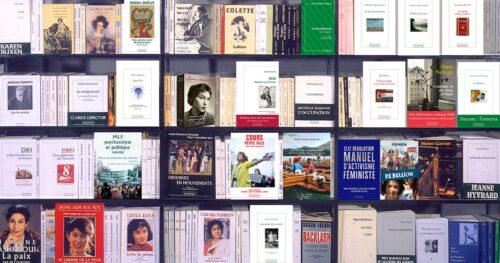Research questions
It will be interesting to refine the “author” criterion used today in the Dictionnaire des auteurs luxembourgeois. According to S. Freyermuth (2016), the CNL “jouit d’une grande influence dans la vie Culturelle”, the publication of the Dictionnaire in 2010 – in Luxembourgish and in French – has led to questions about the large number of authors listed: writers of great scale whose work has nurtured and displayed literary qualities, rank as translators who have never been “premier auteur” or authors from a single local publication.
Clarifying the “auteur” criterion is the first question that is required of the FEATHER project, in order to identify precisely the corpus of the French-language Luxembourg female authors. It is important, in constituting the corpus of writers, to identify precisely their contribution to the literary field, taking into account the resonance of their works and the critical studies that have resulted from them. The “auteur” criterion therefore raises the question of the literacy of the works and the processes of legitimization and canonization that select these works. In this regard, a clue that might be enlightening is how the female authors place and define themselves on the literary scene constitutes a path, provided it does not neglect the aspects of self-depreciation linked to the gender and masculine status of canonical literary activity (Ambroise, 2001). This would take into account the concepts of ethos and posture, which will also shed light on the creation of literary networks.
Three awards are especially highlighted at the national level: the Servais Prize, the National Literary Competition and the Batty Weber Prize in that they are representative of a plurilingual literature, reflecting the plural identity of the country. It is therefore interesting to look at the place of French-language Luxembourg literature. This would be all the more revealing since the authors (men and women) have often explained and expanded on the motivations for language change in their works. Digging this track would allow us to accurately envision a mapping of French-language women’s literature. In a similar line of thought, we note that the most famous female authors are often included in a multilingual Luxembourgish literature. These are the same female authors we find in the list of authors who have won prizes for their works in German and/or Luxembourgish. This, of course, raises a related question: How to articulate the corpus of French-language writers with national multilingual production? For example, the case of Cl. Muno (illustrated by four-language novels) will be interesting clues to identify tensions at work in Luxembourgish literature.
The absence of Luxembourgish male and female authors in the list of International Prize recipients, with the notable exception of the poetess A. Koltz (Jean Arp Prize in 2008 and Goncourt de la Poésie 2018), poses (in addition to the question of the place of Luxembourg literature) the question of the visibility of the female authors. A relevant starting point is based on the work of F. Fehlen (2010), who shows that Luxembourgish writers have relatively easy access to Luxembourgish publishing and prizes, but that the international scene is much more difficult to access. Contrary to the representations that preceded the constitution of this project, the percentage of French-speaking women whose literary work has won awards is higher than that of award-winning French-speaking men. This remark is an opportunity to note the real need for in-depth work on this field, as proposed by the project, which by its simple preliminary clarifications already offers a renewed look at the material.
Considering French-speaking Luxembourgish female authors as members and actresses of literary networks makes it possible to bring to light the interactions they had with the literary field on two levels: 1) how they took part in it, 2) what were the any intermediaries, 3) how they were received there. As the literary field is not neutral (Sapiro, Bourdieu), this study will lead to an understanding of the strategies of legitimation and canonization, taking into account not only critical literary factors, but also the social impact. For example, É. Mayrisch (cofounder of Arbed18 and patron) and his wife A. de Saint-Hubert, who was also the female author of Letters and translator of Maître Eckhart, organized, after the First World War in their castle of Colpach, famous cultural meetings with guests from European literature, like A. Gide or H. Michaux. These meetings fed the place at the heart of European literature of the first part of the 20th century.
